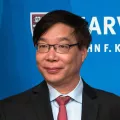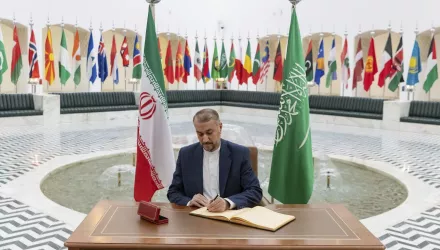"As retaliation against tighter U.N. sanctions, on Saturday North Korea defiantly threatened to expand its nuclear arsenal and begin a program of uranium enrichment--a threat it first made in response to U.N. condemnation of its early April rocket launch. Compared to North Korea's well-known plutonium production program, the nature of Pyongyang's highly enriched uranium (HEU) program is less clear.
The HEU issue first surfaced in October 2002, when North Korean First Deputy Foreign Minister Kang Sok Ju reportedly acknowledged the existence of such a program in response to allegations made by U.S. officials who were visiting Pyongyang. Ever since, though, Kang and other North Korean officials have consistently denied that the country is enriching uranium.
What does the publicly available information reveal about the North Korean enrichment program? A November 2002 declassified CIA report to Congress stated, "North Korea was constructing a plant that could produce enough weapons-grade uranium for two or more nuclear weapons when fully operational--which could be as soon as mid-decade." And a declassified August 2007 Director of National Intelligence report noted, "We continue to assess with high confidence that North Korea has pursued efforts to acquire a uranium enrichment capability, which we assess is intended for nuclear weapons. All intelligence community agencies judge with at least moderate confidence that this past effort continues. The degree of progress toward producing enriched uranium remains unknown, however."
The main evidence regarding Pyongyang's HEU program includes:
- Acquisition of about 24 P1 and P2 centrifuges, blueprints, a flow meter, and special oils for centrifuges, as well as visits to top-secret centrifuge plants built by A. Q. Khan.
- Import of 150 tons of high-strength aluminum tubes from a Russian trader. As of 2008, these tubes haven't been used for centrifuges, which U.S. experts confirmed when North Korea allowed them to see the tubes. U.S. scientists did find traces of enriched uranium on aluminum tubing that Pyongyang had provided to prove that it wasn't conducting enrichment activities, but there is still some argument about the source of these traces.
- A blocked shipment of 22 tons worth of high-strength aluminum tubes in April 2003. Other unfulfilled orders of high-strength aluminum tubes also have been reported.
- An attempt to buy two electrical-frequency converters from a Japanese firm in 1999, and a repeat effort to purchase three converters four years later.
- Acquisition of equipment suitable for use in uranium feed-and-withdrawal systems.
- Reports of traces of HEU on documents submitted to the United States as part of North Korea's nuclear declaration. However, there has been no confirmation of the source of these traces.
In short, there isn't recent evidence of North Korean procurements for a large-scale centrifuge program, as one senior U.S. official knowledgeable about the intelligence on North Korea's nuclear program noted in January 2007. Moreover, there isn't convincing or overwhelming evidence to support the existence of the construction of a large-scale centrifuge facility in the last several years."
The complete article can be read on the Bulletin of the Atomic Scientists website, listed below.
Zhang, Hui. “Assessing North Korea's Uranium Enrichment Capabilities.” Bulletin of the Atomic Scientists, June 18, 2009
The full text of this publication is available via Bulletin of the Atomic Scientists.




